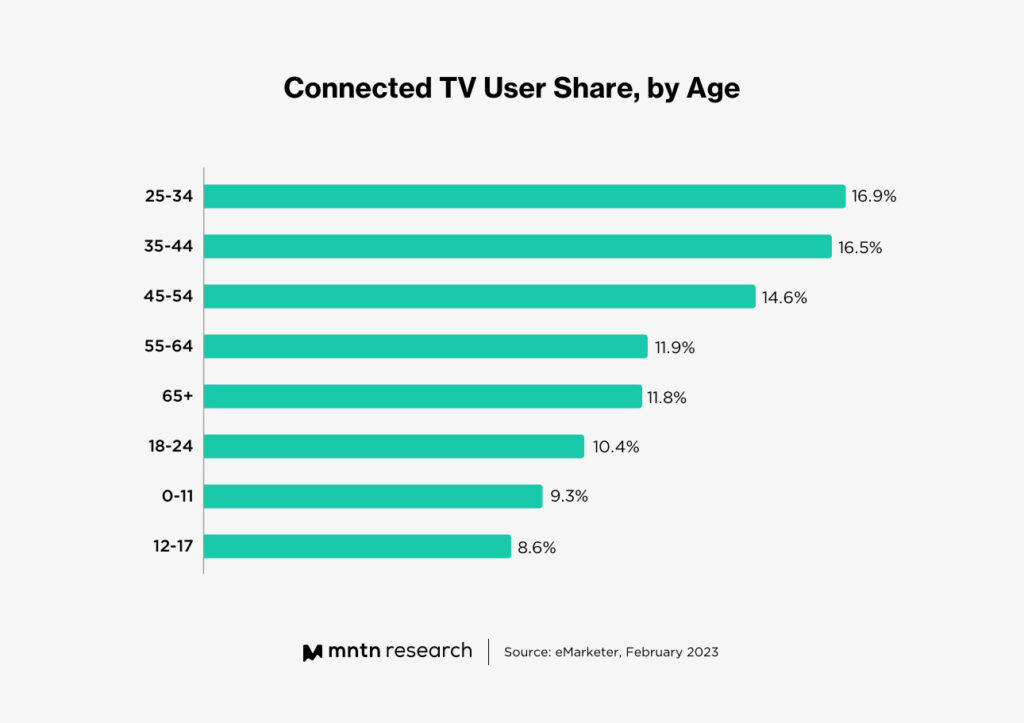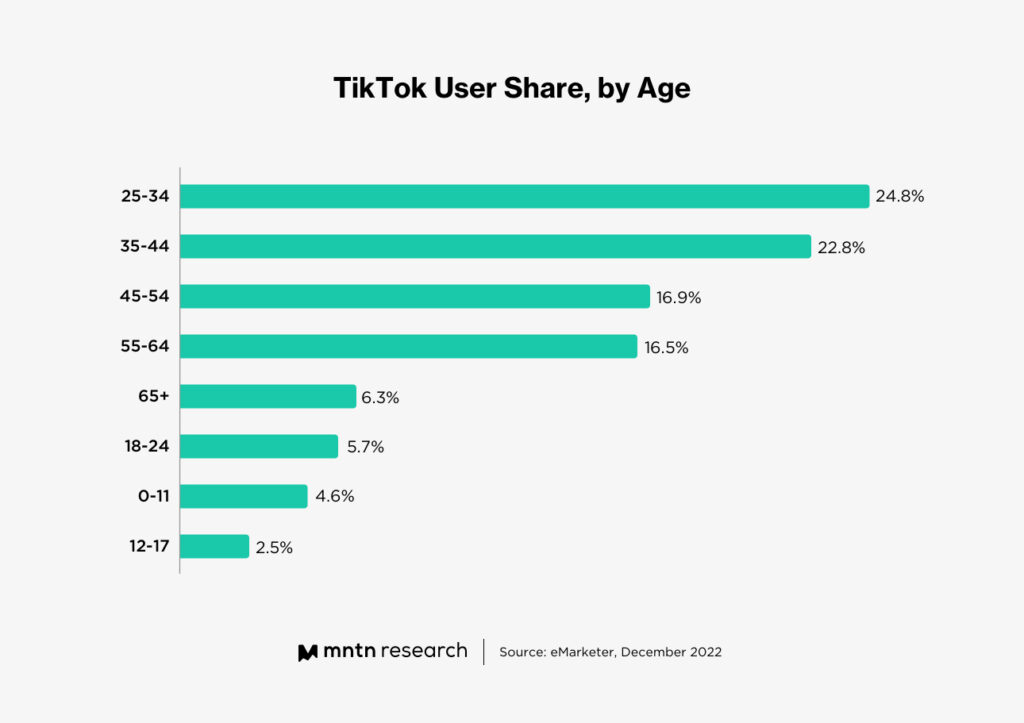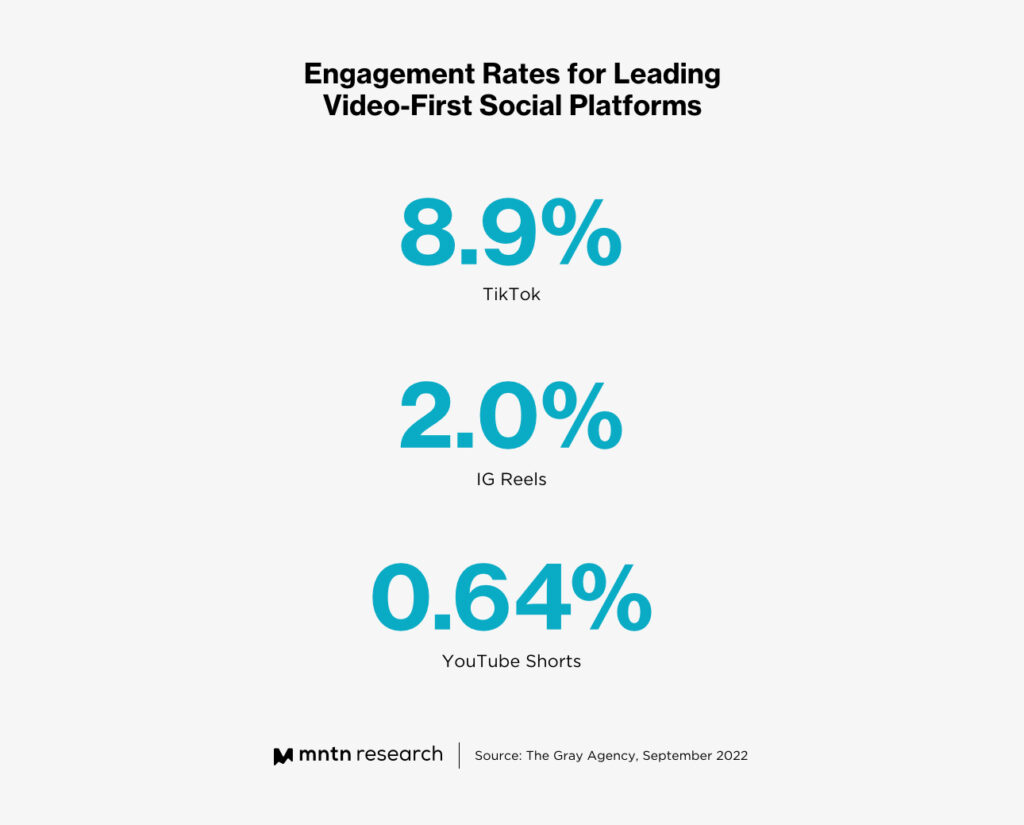Analysis
How Connected TV Creative Can Benefit from Testing on TikTok
by Jacob Trussell9 min read
Abstract
- Connected TV is hot – but TikTok is just as spicy.
- The platform has unified social video by effectively creating its own style of content, featuring bold creative and brash personality to uniquely engage its core audiences on mobile devices.
- The creative freedom of TikTok can be a boon for Connected TV advertisers searching for revolutionary ways to take what resonates on the small vertical screen in your pocket and translate it to the big horizontal one in your living room.
Yes, MNTN Research is all about Connected Television, but that doesn’t mean we’re disconnected from what CTV’s distantly related cousin – social video – is up to. Because as much as everyone’s talking about CTV, marketers are equally excited by TikTok.
But we’re not here to tell you the reasons why you should add TikTok to your marketing mix. Our partners at QuickFrame by MNTN have written at length about these opportunities. What we want to clue you in on is a tactic that few within the marketing world have begun to leverage: utilizing the creative freedom TikTok embodies as an incubator to understand what concepts and visuals resonate with your audience that you can then carry over into a CTV campaign.

This becomes a possibility because one major thing these two platforms have in common are their respective audiences. Just look at the user share, by age, for Connected TV and TikTok in 2023.

The user share of both platforms aren’t necessarily an exact match, but they do show where their audiences overlap the most: users ages 25-34 lead the pack on CTV and TikTok.
The biggest difference is that audiences younger than 25 are more prevalent on TikTok than CTV. Users between the ages of 12-24 comprise almost half of all of TikTok’s base (39.7%), but less than a quarter of CTV’s base (19%).
But that’s not the whole story.
Over 57% of TikTok users are over the age of 25, which means the majority of TikTok users are millennials, Gen Xers, and Baby Boomers. Combine that with the fact that this same age bracket comprises 71.7% of all CTV users, and the point we are making should become a little clearer: CTV and TikTok share very common audiences. You can then make an informed prediction that the ad creative that resonates with your audiences on TikTok may very well also resonate with those same audiences on Connected TV.
This can be especially beneficial if you want to take bold creative risks that may feel too risky to test first on a CTV campaign. Because of the bitesize nature of TikTok’s short-form videos, you can take a low-lift approach to creative experimentation, throwing everything at the wall, and seeing what sticks with your audiences on one buzzy platform – before bringing it over to the next.
In this Research piece, I’ll take you through the evolving nature of TikTok and how you can use the platform’s limitless creativity to test bold new approaches to video ads, finding what works for your audience and then transforming it into living room quality creative.
The Ever Increasing Popularity of TikTok-style Videos
TikTok has a simple, but specific, company goal:
“Our mission is to capture and present the world’s creativity, knowledge and moments that matter in everyday life. TikTok empowers everyone to be a creator directly from their smartphones, and is committed to building a community by encouraging users to share their passion and creative expression through their videos.”
TikTok has played a vital role in turning everyday people into viral content creators. These users are already fluent with the tools of visual storytelling, and brands need to keep that top of mind. TikTok’s audience are filled with content aficionados who will be able to tell when an ad feels brazenly salesy or inauthentic.
While we think of TikTok as a social channel geared toward younger audiences, as illustrated above, there is a balanced representation of users across all demographics, including Baby Boomers. As older generations tap into the fun of the platform, brands have an opportunity to connect with each unique audience segment in new, innovative ways.
The Unified Video-First Experience
Almost overnight, the emergence of TikTok and its unique video experience has effectively created a whole new style of content. These stylistic videos typically feel user generated, are filled with authentic messages, bold humor, impressive visuals, and typically provide something of value to its viewer. That value could be educational–like showing how you get ready for your day – or strictly entertainment, as seen by the myriad of inspirational dance videos that often overtake the app.
The rapid adoption of TikTok can be attributed to the creative control the platform provides. In a way, TikTok has democratized video creation. Now anyone can make a professional quality video, not just those creatives who already know how to use Adobe After Effects. With the assistance of free tools available in-app, TikTok users can easily create stunning videos that feel polished and professional. These tools make the content feel high-quality, while also allowing the user to build skill sets they can use both in work and in life.
While the TikTok style was arguably cultivated on Vine – the grandparent of the video-first social world – it’s been refined by TikTok into a global phenomenon, thanks to the aforementioned creative control. The TikTok takeover hit an inflection point once other social companies, from Meta to YouTube, began to unveil their own TikTok style experiences. What this has inadvertently done is create a singular native experience across all video-first social media platforms, bringing the TikTok aesthetic to platforms like Instagram Reels.
In other words, you now don’t have to be on TikTok to see a TikTok-style video.
Translating TikTok to CTV
Because the native video-first experience is a style of content millions consume every day, seeing it on the biggest screens in your home shouldn’t be as jarring as you may first imagine.
Just think about it – you’ve likely already seen streaming CTV ads that mimic or integrate the hallmark vibes users associate with TikTok. It could be a simple repurpose of an existing TikTok video, adding in different graphic elements to fill the 16:9 frame so the ad feels more like living room quality creative. Or it could be a net-new commercial that adopts stylistic elements familiar to a TikTok video, whether that’s effects, music, or authentic internet-friendly humor.
Audience’s aren’t just accustomed to TikTok style videos, they are craving it – a central reason why it should be used as a “creative incubator” for platforms like Connected TV. If you can identify messages, talent, or opening hooks that resonate with your TIkTok audiences, you can make those learnings a core part of the creative approach you take with your CTV ads. Based on the similarities between the platforms audiences, you may well discover that what resonates with users on one platform will resonate with similar users on other platforms.
To help you wrap your head around this a little more, here are a few creative elements we recommend you focus on when translating the language of TikTok into the format of CTV.
Messaging
Because authenticity is so important to modern audiences, really focus on the tone of voice you use with your messaging. Striking a relatable tone TikTok users are familiar with can do a lot of the heavy lifting connecting these audiences to your CTV creative.
Length
The pace and duration of your ads are important as well. An enticing hook with quick cuts that drive a sense of urgency are all hallmark experiences of TikTok style creative that can be easily translated into a CTV ad.
Aspect Ratio
This is the most noticeable difference between TikTok and CTV creative. The vertical, 9:16 aspect ratio that TikToks are in do not lend themselves to the standard 16:9 format of all television ads. That means you can’t simply repurpose TikTok ads on CTV without additional production work.
There’s two ways to approach this technical problem:
- The easy route (that you may have already seen before when watching streaming ads) is to add-in additional visual elements, like more on-screen text or graphic design to fill out the 16:9 frame.
- The recommended route though is to plan the path from TikTok to CTV in advance. When you’re producing the actual creative, aim to capture all the footage your campaign will need – and that includes shooting the same concept in multiple aspect ratios so that you can test creative on TikTok, and then use the 16:9 version of that same winning ad in a CTV campaign.
Why TikTok (and not Reels or Shorts?)
TikTok may lead the pack in marketers hearts, but it doesn’t quite match its competition when it comes to monthly active users and ad spend. According to The Gray Agency, Instagram Reels has more monthly active users (2 billion compared to 1.2 billion) and YouTube Shorts have a much higher ad reach ($2.56 billion compared to $884.9 million). But what TikTok does have is higher user engagement rates:

This shouldn’t come as too much of a surprise. TikTok has famously captured more attention over the last three years than any other social media app. And, like we’ve mentioned, people flock to the app because TikTok offers wide creative freedom, for both users and brands. Your videos can be as bold and risky as you want them to be – because that’s what TikTok users want to see. Users expect, and are more receptive, to videos that don’t just think outside the box – they like videos that destroy the box.
This gives your brand the opportunity to be incredibly creative, without feeling like you are producing an ad that doesn’t feel “brand safe”. People expect brands to get weird on TikTok (just look at the popularity of DuoLingo’s account) so you should feel permission to test the boundaries and see how bold you can be – and then carry those creative wins to your CTV campaigns.
Also it goes without saying that TikTok is one of the leading channels where viral trends emerge. Marketers should consider the platform almost like a look-book for creative approaches they may want to borrow for their future campaigns.
Conclusion
This conversation would feel incomplete without mentioning the elephant in the room: the big ominous question mark floating over the fate of TikTok. Will it get banned? Will it be sold? And if it disappears, where will all that ad spend go?
We’re not going to speculate what the future holds for marketers’ favorite social platform, but holding your breath waiting to hear what happens next is a sure-fire way to get a little oxygen deprived.
Don’t treat TikTok like it’s got one foot out the door – instead, look at TikTok as a new means to an end. Yes, it can be a jumping off point for creating a profound social presence with your brand. But it can also be a launching pad for getting you hooked into Connected TV advertising, creating a feedback loop of insights you can iterate and improve on as you further diversify your marketing mix.
Subscribe to the MNTN Research Weekly
Sign up to receive a weekly feed of curated research, sent straight to your inbox.